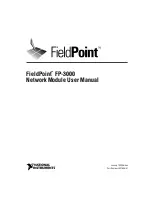
Chapter 4: LAN Switch Architectures
In Depth
Knowing the internal architectures of networking devices can be a great asset when you’re working with
Cisco switches. Knowing how the internal components work together, as well as how Application−Specific
Integrated Circuits (ASICs) and CPUs are used, can give you an advantage in determining what Cisco device
will work best at every point in the network.
The Catalyst Crescendo Architecture
When you’re looking at the architecture of the switch, ASICs are among the most important components.
ASICs are very fast and relatively inexpensive silicon chips that do one or two specific tasks faster than a
processor can perform those same functions. These chips have some advantages over a processor but lack
functions such as filtering and advanced management functions, and they have limited support for bridging
modes. ASICs make today’s switches less expensive than processor−based switches. Processor−based
switches are still available, but they are expensive and limited in the number of tasks they can take on and still
maintain reliable and acceptable limits of throughput.
The Set/Clear command−based Command Line Interface (CLI) switches (also known as Crescendo Interface
switches) found in the Cisco Catalyst 2900G, 5000, 5500, 6000, and 6500 series of switches, give the best
example of how the Broadcast and Unknown Server (BUS), ASICs, Arbiters, and logic units work inside the
switch. Let’s look at Figure 4.1, which shows a diagram of the ASICs and processors found inside a Cisco
5000 series switch. We’ll examine these components and then look at several other ASICs that are for more
specialized or earlier model Cisco Catalyst switches.
Figure 4.1: The architecture of the Cisco Catalyst 5000 series switch.
First, we need to look at the components involved: the ASICs, Catalyst processors, bus, and other units of
logic. Let’s begin by examining each of the BUSs; then we will define the ASICs shown in Figure 4.1.
BUS
Every switch must have at least two interfaces. But what fun would just two be? Today’s switches can have
hundreds of ports. The BUS connects all these interfaces—it moves frames from one interface to the other.
All these frames require an arbitration process using processors, ASICs, and logic units to make sure data
doesn’t slip out the wrong port or ports.
68















































